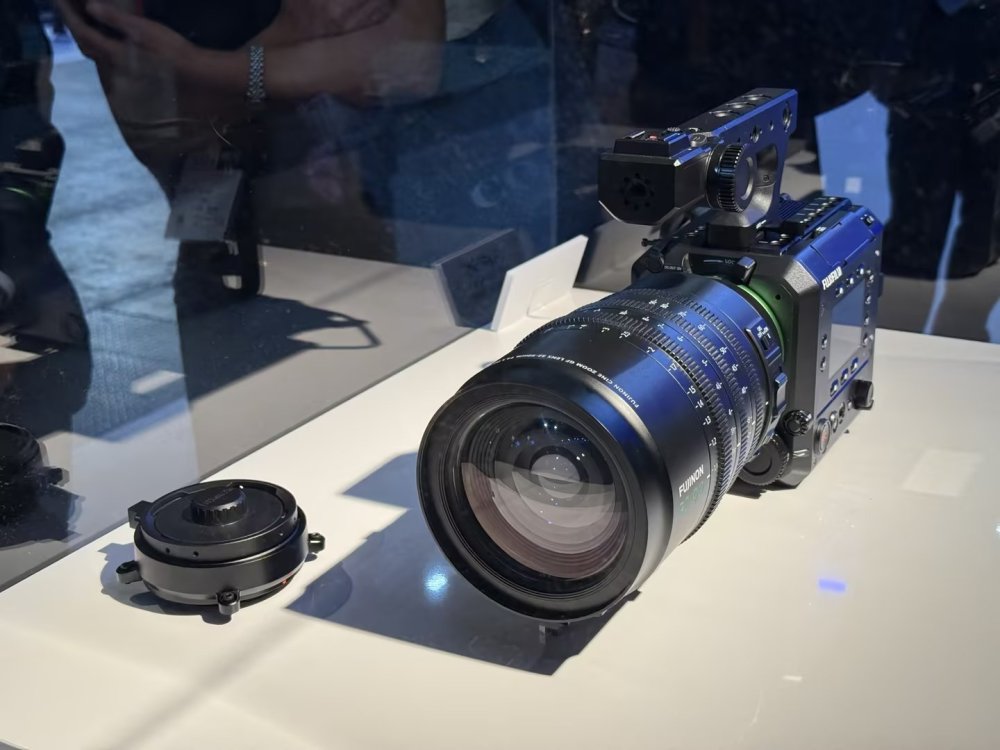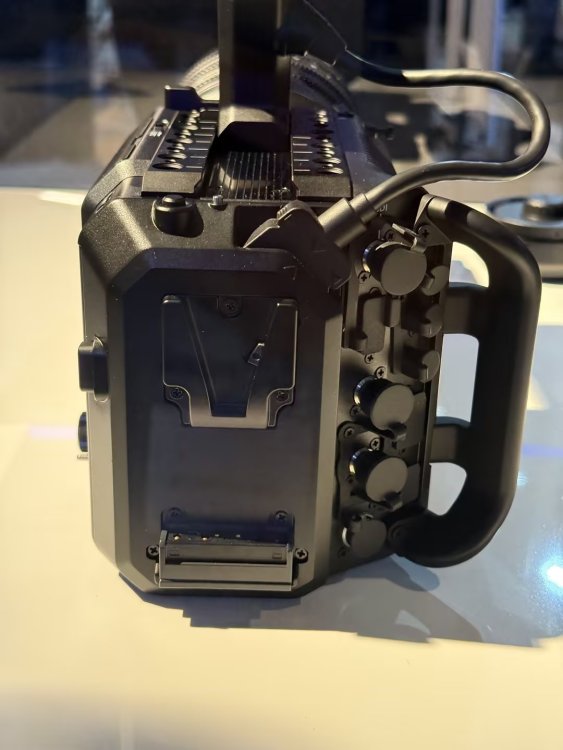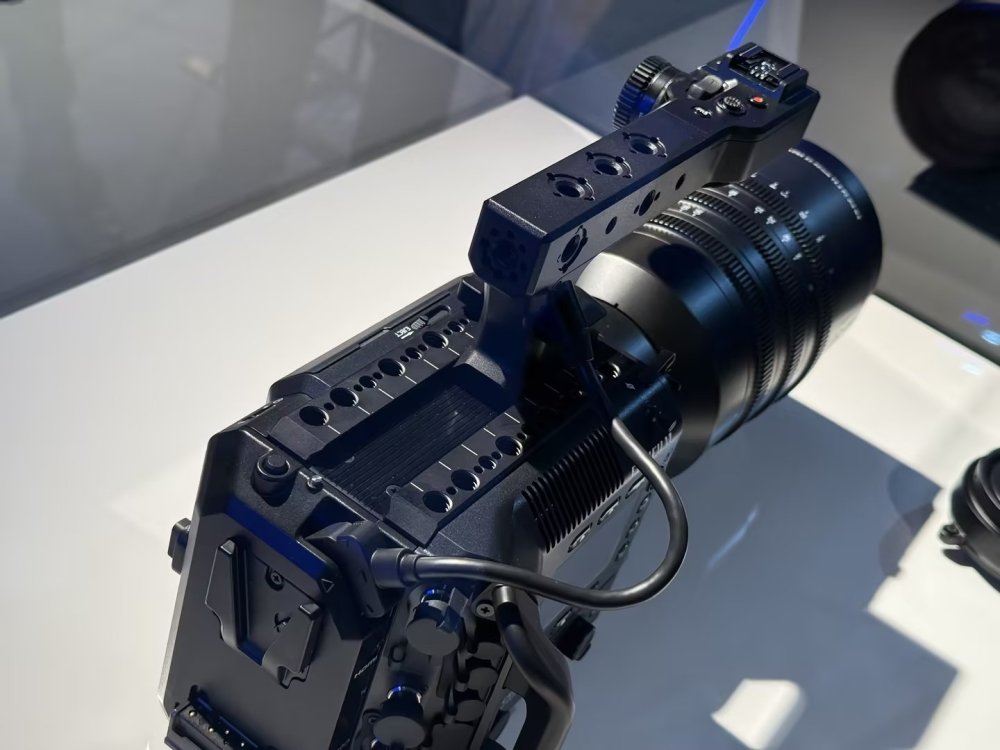
ND64
-
Posts
855 -
Joined
Content Type
Profiles
Forums
Articles
Posts posted by ND64
-
-
Vivo X200 Pro
In: Cameras
That phone camera is cool, but image quality comparison on compressed-to-oblivion platform like YouTube, with 4k maximum resolution, which is only 8MP, and even a crop on that resolution for the sample images, is anything but legit comparison.
BTW, while I love to have 5x optical zoom on my phone, I'm not sure it stays in the market for long time due to complexities it introduces to the whole smartphone manufacturing which has already became too complicated. For example my Chinese smartphone has a motor driven selfie camera. It was the best thing happened by the industry in my opinion. The camera unit is inside the phone when its not used, which is a big plus if you care about privacy (and you want to know when exactly the camera is on. No hacker can see you when the sensor is physically blocked, and you'll notice when an app requests a visual feed), and as a bonus your screen will always be hole/island free. But Chinese abandoned it after one or two generations, and made the upgrade a massive pain for me, since there is that stupid hole on the screen on every new smartphone. Its very hard to come back to that ugliness. They said its a mechanical thing and a point of failure, but mine never failed, even after exactly 5 years of heavy use. Thats Toyota level of reliability in the smartphone world. So my advice is if you see a cool feature, grab the phone and keep it. This market has a giant backyard of abandoned good ideas. The moment they find a cheaper solution to give you a 5x zoom, even with crappier results, they'll ditch the expensive optics. Even if we're talking about $11.5 a unit expensive.
-
11 hours ago, newfoundmass said:
They don't take risks and there is no sense of urgency, even when they're in last place and showing minimal growth.
Taking risk is riskier for smaller player. Look at the internet backlash against Z6III new sensor problems. Nikon might sell fewer than it expected because of that, but the volume of this all arounder is enough to absorb the lost sales. With smaller volume, you have to be sure nobody will complain. I'm not saying they should be conservative, I'm saying maybe they couldn't find a trouble free sensor with the price they can afford. Maybe A1 sensor isn't for sale, or Sony's charging too much.
-
3 hours ago, IronFilm said:
I could still see them releasing a couple more DSLRs (plus or minus one) before they totally call it quits on DSLRs
They sent modified Z9 to the space station. That alone is enough evidence that there will be no DSLR release. No customer is more conservative than NASA.
-
Its hard to believe Canon lose its domination. 1 in 2 photographers in the world own a Canon, and they see no reason to switch.
-
-
On 12/10/2024 at 10:41 PM, Jahleh said:
With longer focal lengths having heavier lens helps of course too, like it was with the S5ii
Nikon IBIS+VR combo at tele is best in class, and its intriguing that nobody figured it out yet how to reach peak performance at both ends, Sony is very good at wide focal length but terrible at tele.
-
Yes, if you can live with contrast AF.
-
It shows how h265 capture is good enough for YouTube level content, rather than unnecessity of the raw. And by the way we haven't seen true potential of NRAW, because as of now its only available in cameras that have relatively low DR sensors.
The perfect scenario however would be universal support of JPEG XL by all camera makers. Its free, its efficient, it can do raw, alpha, up to 32 bit, HDR, basically every feature that is needed.
-
Samsung has consistency problem in all their businesses. Look at their Exynos shape right now, or even their OLED. They abandoned large sensor production to focus on smartphone sensor, and they're already pioneer in small pixel tech, yet you find no Samsung sensor in the main camera of the flagships.
-
So not buying any BT headphones?
-
Viltrox has better corner sharpness, and its AF motor is quieter.
-
1 hour ago, Ninpo33 said:
Feels like all the major brands are releasing recycled parts with old sensor tech.
But when Nikon keeps an old sensor in a sub $1000 APSC body and upgrade everything else, the internet says "what a bummer". When Sony does the same, in a $6500 body, YouTubers call it "mind blowing", "perfect flagship". If Canon does the same its called "corporate greed", but when it comes to Sony its called "strategy".
It also debunks the old stupid notion, again, that Sony Semi keeps the best and state of the art sensor for Sony Imaging! Sony Semi can't send the best when Sony Imaging says "We don't want the best, cause its high development price lower our profit margin, thanks". So Sony users are stuck with 8k30p, and non downsampled 4k, for the next two years, while users of the other Sony Semi customer have 8k60p and downsampled 4k60.
-
8 hours ago, eatstoomuchjam said:
Do you know more than they do, now?
What you're talking about is for EM-CCD sensors, not CMOS.
"Pixel clock rate is an important specification for CCD and EM-CCD cameras, but not for CMOS cameras because of chip architecture. Unlike CCD and EM-CCD cameras where photoelectrons from each pixel are converted into voltage one-at-a-time via a single amplifier, in CMOS cameras each pixel has its own amplifier, so conversion of photoelectrons happens in parallel in all the pixels."
From Hamamatsu company website. You know more than they do?
-
4 hours ago, eatstoomuchjam said:
Good job redefining the argument so that you can be right. Literally nobody said "edit a few lines of code" or "let the sensor consume more power." You win today's gold star for bad faith argument loss tactics.
Dude its not abortion ban subject. You just need to learn more about sensors, even their datasheet can help, and you'll find out. "Literally nobody said let the sensor consume more power"? Really? This is your exact words: "Wrong. There are plenty of examples of overclocking various sensors over the years". Unless we assume you're "nobody". Fair enough.
-
4 hours ago, Ninpo33 said:
And you know for a fact that this sensor doesn’t support any tweaks/adjustments or the ability to improve performance?
That tweaks/adjustments are hardware changes, and needs redoing a lot of stuff at fab level. It's not like you edit a few lines of code and get a more capable sensor. Does GFX100II sensor support different modes of read out? Who knows.. But if there is any, thats not simple as "let the sensor consume more power".
-
-
5 hours ago, Caleb Genheimer said:
If it’s still tapped out at the stills body’s readout options, it’s a bit underwhelming
Its not like gaming PC that you overclock a bit and gain some extra performance. The sensor should support that specific read out capacity.
-
-
What's the purpose of this announcement when almost no specs released other than sensor resolution? Why not wait until its done?
-
Apparently at 4k30p you hit the 2h05m limit sooner than overheating warning, hence bigger body.
Regarding lenses, they patented a compact 16-48 f/2.8 design few years ago, I don't know why they don't make it.
-
-
What exactly Panasonic doing in 4k24p?60p is even worse. Then at 120p it looks 2MP image.
-
Canon R6 III
In: Cameras
The first "reasonable" rumor emerged:
24-megapixel LC1720 sensor (C80)
DIGIC Accelerator processor
8.5-stop hybrid image stabilization.
Same focus system as EOS R5 II
Highly reliable 14-bit 30fps RAW electronic shutter continuous shooting
reading speed 1/180s.
In-camera neural network noise reduction and high-resolution magnification.
Supports XF-AVC S and XF-HEVC S recording of C4K/120p (S35) and 6K oversampled C4K.
Supports 6K30p and 4K60p (S35) Cinema RAW Light recording.
_________________________________
If true, C80 sensor in R6 body will satisfy many of Canon customers, but not enough to make other brands users jealous. If Panasonic was clever, and fast, could make this DOA with a 6k60p camera.
-







State of the industry summarized in an Insta post
In: Cameras
Posted
Don't want to start 2025 with a negative post, but I saw this depressing new year resolution today:
Nothing wrong with being a train operator, but we're at a point that being a train operator is a better career option than shooting pro video with RED cameras.